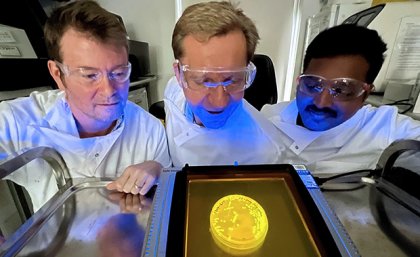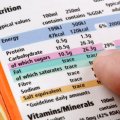
Researchers from The University of Queensland have made a dust from baker’s yeast that can detect COVID-19 and could safeguard communities against future pandemics.
The powdery ‘nanoprobes’ developed at UQ’s Australian Institute for Bioengineering and Nanotechnology (AIBN) are synthetic yeast fragments which can be deployed in environments such as airports, hospitals, stadiums and sewers to detect COVID-19 biomarkers.
Lead researcher and director of the AIBN’s Centre for Personalised Nanomedicine Professor Matt Trau said the yeast nanoprobes can also be integrated into current COVID-19 testing platforms.
“Yeast has long been a cheap and abundant ingredient in bread and beer and thanks to its unique chemical properties, it can now be used in diagnostic technologies that rival PCR testing for speed and sensitivity,” Professor Trau said.
“We often refer to yeasts as biofactories because they are the oldest industrial microorganisms.
“In this case, we are using the same historically inexpensive and highly scalable food production systems to create a sensor powder that can be deployed in the environment to detect a range of viral threats.”
Fluorescent, electrochemical or dye-based analysis techniques are used to examine the nanoprobes to see if they’ve been exposed to a virus.
AIBN research fellow Dr Selvakumar Edwardraja said the yeast sensor technology can be genetically programmed to detect specific viral strains, such as the COVID-19 variants Delta and Omicron, and give health systems a head start on new and emerging viral threats jumping from animals to people.
“The constant mutation of COVID-19 means it is no longer enough to test whether someone has been infected,” Dr Edwardraja said.
“We must now be able to quickly identify which variant a patient has, where it has come from, and what needs to be done to treat it.”
Research co-author Dr Chris Howard said the cost-effective and easily scalable nature of the yeast nanoprobes means the technology is an accessible tool for pandemic defence systems.
“If we want to block new and more severe variants from taking hold, we need diagnostic tools that are quick to make and distribute and can be tweaked for a wide range of on-site testing processes,” Dr Howard said.
“With yeast being so cheap, this technology could be important for low resource regions of the globe that cannot afford current expensive diagnostic tests.”
The nanoprobe technology is described in full in Nature Nanotechnology.
Media: AIBN Communications, Alex Druce, a.druce@uq.edu.au, +61 447 305 979; UQ Communications, communications@uq.edu.au, +61 429 056 139.
.jpg)









